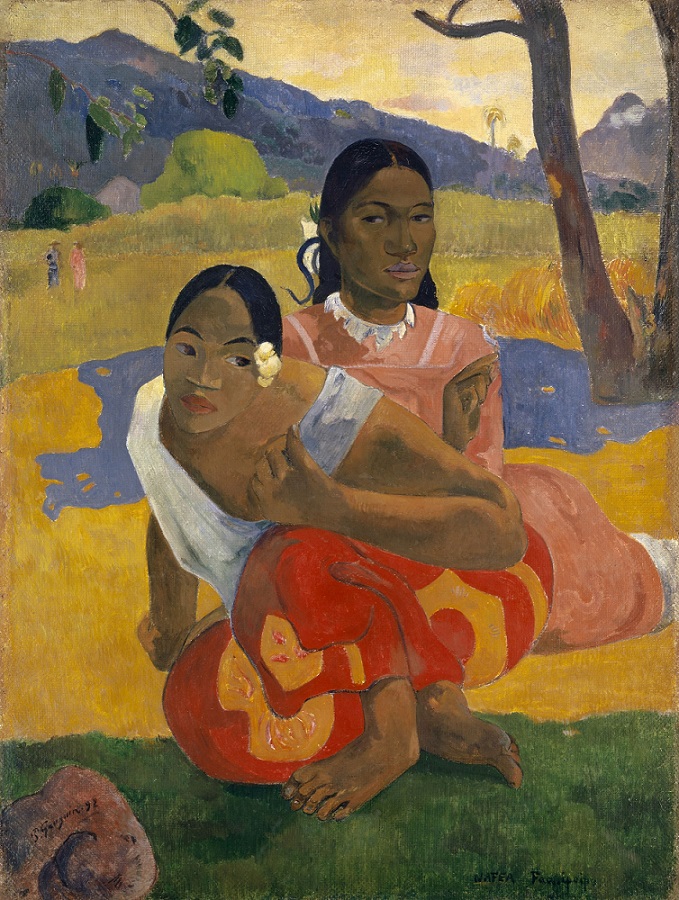
Gauguin travelled to Tahiti for the first time in 1891. His hope was to find "an edenic paradise where he could create pure, 'primitive' art", rather than the primitivist faux works being turned out by painters in France. He painted many pictures of native women: nude, dressed in traditional Tahitian clothes, and dressed in Western-style dresses, as is the rear figure in When Will You Marry?.
In Where Will You Marry, a younger woman in traditional dress stretches forward on the ground. She is looking back towards, and partially obscuring, a more matronly figure in a western style dress who raises her hand in a gesture of significance. The flower behind the girl's ear is a traditional Tahitian symbol by which nubile women signal availability for marriage. At the foot of the image is an inscription in Tahitian: "NAFEA Faa ipoipo", which translates as: "When will you marry?"
This painting was sold privately by the family of Rudolf Staechelin to Sheikha Al-Mayassa bint Hamad Al-Thani, in February 2015 for close to US$210 million, one of the highest prices ever paid for a work of art.
Vision After the Sermon
Two Tahitian Women
Festival of Gods
Where Do We Come From? What Are We? Where Are We Going?